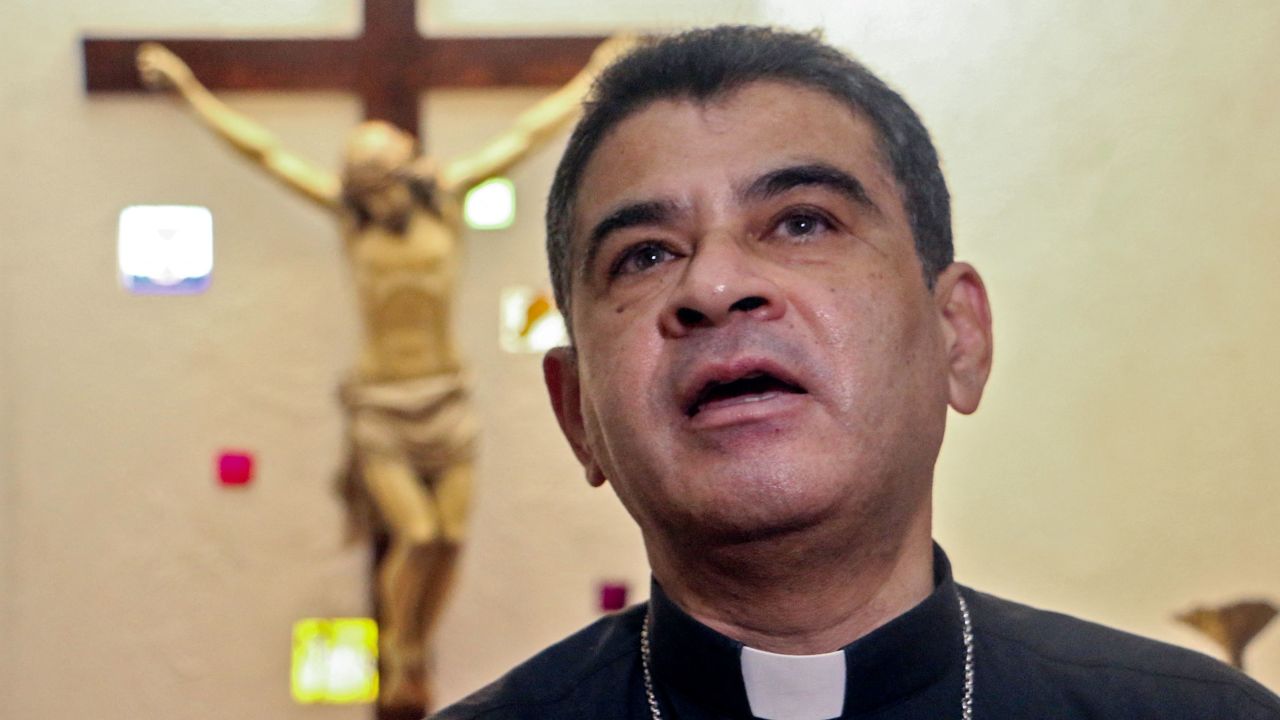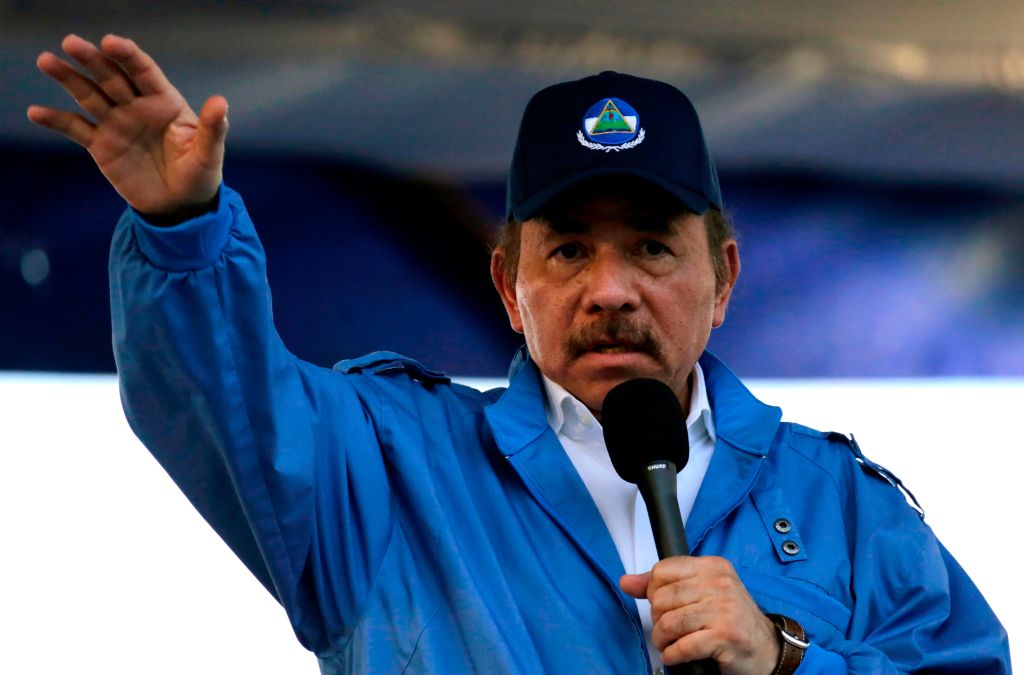For years, Nicaraguan authorities have waged a war against the Catholic Church in the nation at the behest of President Daniel Ortega. These actions have culminated in the arrest of the Bishop of Matagalpa, Rolando Alvarez, several seminarians, and a ban against holding public processions during the Lenten season in 2023.
The Catalyst
The war against the Church in Nicaragua did not spring out of the ether, rather, it was the result of the Church’s continued political influence in the Central American country and the actions of agents of the Church during Nicaragua’s infamous 2018 anti-government protests.
The protests were in opposition to changes in the country’s social security system, requiring workers to pay more into the system while receiving less of the benefit when they retire. Protestors called for the removal of Ortega, who has held office since 2007.
Protestors utilized home-made mortars and Molotov cocktails while others established a basic field hospital stocked with necessities to treat those injured by police crackdowns. Many of the protestors were university students who had historically supported Ortega’s regime, which may have influenced the government’s swift crackdown on demonstrators.

The government acquiesced to the protestors, dissolving the changes to social security. But these actions failed to end the protests, and as demonstrations continued authorities escalated the use of force until shots rang out at the sites of protests.
Ultimately, at least 360 people were killed during the protests–dozens in the first weeks of the uprising– more than one thousand detained by authorities. These deaths marked a bloodstain on one of the deadliest periods of Nicaraguan history since the end of the civil war, which rocked the country for just over ten years. Furthermore, amid Ortega’s crackdown, the American director of Amnesty International published a report alleging that Ortega had committed crimes against humanity.

Amid these protests, the Catholic Church played a pivotal role in bringing an end to the violence, acting as an impartial negotiator between government forces and protestors. A number of officials of the Church in Nicaragua also petitioned for the release of those arrested during the protests, with figures such as Cardinal Leopoldo Brenes and Bishop Silvio Baez speaking out against the abuses against protestors while calling for peace and dialogue to prevail. A cathedral in Managua was also a key location for protestors, where the Church stockpiled food and gathered donations for protestors.
The Church’s negotiation on behalf of the protestors ultimately frayed the relationship between Ortega and the Catholic Church, leading to the arrest and exile of a number of Catholic priests. Ortega went as far as to claim the Church was complicit in a plot to oust the president, labeling select priests as “terrorists” before locking them away.
Further Attacks Against Independent Thought
Eventually, Ortega would take action against the Church in a case that would shake both the world and the Church to the core. The president forcibly shut down a number of Catholic radio stations under the auspices of voicing support for the protests, and seized University of Central America in Nicaragua which was operated by the Society of Jesus, better known as the Jesuit order.
Opponents claimed the move was an effort to further silence political opposition within Nicaragua, with many claiming the university was the last bastion of free thought within the country. In the eyes of Ortega, however, the university was a “center of terrorism” within the country and a threat to his hold on power. Only a week later, the entire Jesuit order was declared illegal by Ortega’s government and all assets belonging to the organization were seized.

“This is a government policy that systematically violates human rights and appears to be aimed at consolidating a totalitarian state,” the Society of Jesus of Central America said in a statement following the seizure.
The University of Central America was not last university to be closed by Ortega’s administration. Twenty-six other universities were either closed or seized by authorities, and faced similar claims of spreading terrorist ideals and hatred against the government.
A number of private charities faced similar reprisals from Ortega’s government, with more than 3,000 charities being shut down by 2024, includingMother Teresa’s charity, a Catholic charity administered by nuns to care for refugees, prostitutes, orphans, and those suffering from debilitating diseases.
“These closures demonstrate the magnitude of violations of the right of association,” a right recognized in the Nicaraguan Constitution and in the international human rights system, Amaru Ruiz, director of the environmentalist Fundación del Río, told AP.
The Case of Bishop Rolando Alvarez
Most notable may be the arrest and subsequent exile of Rolando Alvarez, the Bishop of Matagalpa, which made international headlines and began a year-long legal battle for the Bishop’s freedom.
Actions against Bishop Alvarez began in August of 2022, when authorities prevented the Bishop from traveling to the priest’s home parish of St. Peter’s Cathedral to perform the Mass following the Bishop’s criticism of the government for shutting down Catholic radio stations alongside questioning the government’s human rights record.

Just two weeks after this de facto house arrest, authorities officially arrested Bishop Alvarez in a 16 hour-long standoff at his residence. Seven other priests who were with the Bishop at the time were also arrested when the standoff ended. Alvarez was transported from his residence to his parents’ home where he remained under house arrest until being imprisoned in February 2023 after his conviction on charges of inciting violence, treason, and undermining national integrity. These charges sprang from claims that Alvarez had participated in “destabilizing and provocative” activities in the country, spread false news, and damaged the Nicaraguan government and society.
Bishop Alvarez received a 26-year prison sentence, and was stripped of his citizenship after the Bishop refused to be exiled to the United States alongside 222 other Nicaraguan political prisoners. Following his arrest, numerous other priests were imprisoned in December for publicly praying and “for refusing to stop mentioning Bishop Alvarez in their sermons,” sources close to the parishes told Reuters.

The Nicaraguan government in May 2023 froze a number of Parish bank accounts on claims of money laundering in connection to imprisoned clergymen. Authorities claimed investigations “confirmed the unlawful removal of resources from bank accounts that had been ordered by law to be frozen.” They further stated that the accounts of interest were owned by Clergy convicted of treason and other crimes, further stating that the funds entered the country irregularly.
Ortega’s crackdown on Catholics in the country would only worsen following Pope Francis’s criticism of the government, labeling Ortega’s government as a “gross dictatorship” in His Holiness’s Angelus Prayer. A number of foreign officials spoke out in defense of Bishop Alvarez, including US officials and Brazilian Prime Minister Luiz Inácio Lula da Silva, who vowed to Pope Francis that he would personally work towards freeing Bishop Alvarez from captivity.
“I intend to speak with Daniel Ortega about this to release the bishop. There is no reason for the bishop to be prevented from exercising his function in the Church,” Lula said. It remains unclear if the Pope asked Lula to intervene on behalf of Bishop Alvarez. “The only thing the Church wants is for Nicaragua to free them,” Lula said in reference to Bishop Alvarez and other priests.

These efforts would seemingly come to fruition, as Bishop Alvarez alongside 18 other Catholic clergymen were exiled to the Vatican in December of 2023, ending Bishop Alvarez’s stay in prison. Those expelled included 15 priests, two seminarians, and Bishop Isidoro Mora, one of the aforementioned clergymen arrested for praying for Bishop Alvarez.
The government thanked Pope Francis for facilitating “the very respectful and discreet coordination carried out to make possible the trip to the Vatican” in a statement published on El 19, a Nicaraguan news outlet with ties to Ortega’s government.
A Ban on Lenten Processions
In one of Ortega’s most well-known moves against the Catholic Church, the Nicaraguan government banned public Lenten processions and publicly praying the Stations of the Cross. The ban followed a speech by Ortega in February, in which he claimed the Church is a “mafia organization” and accused the Vatican of “grave crimes and horrors.”
“I don’t believe in popes or kings; who chooses the Pope?” Ortega said during his speech. “If we want to talk about democracy, the people should first elect priests and the bishops, and even the Pope should be elected by direct vote and not by the organized mafia in the Vatican.”

Ortega’s speech came in the wake of Pope Francis’s Angelus Prayer for those in Nicaragua on February 12th, with his Holiness saying to the crowd: “[I pray] for those who have been deported to the United States and for all those who suffer in the beloved nation of Nicaragua.”
This kind of crackdown on Catholic activities is preferably avoided by most Latin American leaders, as Catholicism is the dominant religion among the descendants of Spanish colonialists. More than 55 percent of Nicaragua’s population registered as practicing Catholics in 2010. As a result, the Vatican’s influence has had far-reaching consequences in South America, which many revolutionary governments have sought to suppress, as was quite common during the 1960s and 1970s in Latin America.
The Catholic Church’s Political Sway
The Roman Catholic Church, which makes up the largest Christian denomination in the world, has played a pivotal role in the politics of nations across the world since the Church’s birth in 33 AD. Clergymen and laymen alike have lobbied for the Church’s beliefs and interests, with priests and bishops across the United States and the world working towards banning abortion and expanding social welfare for the poor and needy, among other political topics.
In this regard, the Vatican cites the teachings and life of Saint Thomas More, the patron saint of politicians and statesmen. The Holy See teaches that “man cannot be separated from God, nor politics from morality,” while calling for Catholics to maintain their faith through any political struggle and “fulfilling their civic duties, guided by a Christian conscience.”

This teaching that Catholics must participate in politics through obedience to Church doctrine has historically posed an obstacle for political figures across the world and throughout history, with many totalitarian leaders seeking to eliminate the Church’s influence through various means throughout history.
One famous example lies in Cuba with the rise of Fidel Castro who nationalized Catholic schools, silenced Catholic priests, and limited the reach and freedom of Catholic news agencies following the Holy See’s condemnation of communism. Actions against the Church in Cuba peaked when, in 1961, Castro exiled 130 priests to Spain in just one night.
This schism between historically Catholic Cuba and the Church would eventually heal following the fall of the Soviet Union and the visit of Pope Saint John Paul II in 1998 who spoke closely with Castro, with the reinstatement of Christmas as a national holiday alongside the lessening of restrictions on Cuban trade being attributed to the meeting between the two.

A number of Catholic priests have also practiced what is known as Liberation Theology, a belief system structured around the liberation of those oppressed by both societal and economic hardships. A number of influential priests in this movement found their start in Latin America during the mid 20th century, a region which at the time was rife with civil conflict, widespread wealth inequality, and political turmoil.
These examples showcase the Catholic Church’s historical and continued influence in politics in nations where the religion is predominant, and through this influence, the Church remains an important faction to please for many leaders across the world.
Ortega’s war against the Church is just one case in the hundreds that the Church has fought over centuries of its existence and surely will not be the last.


